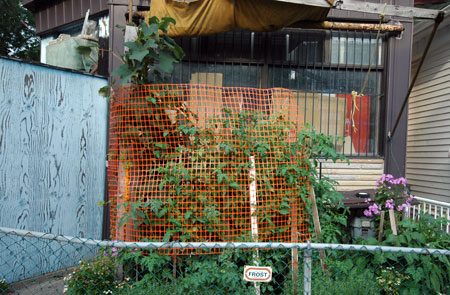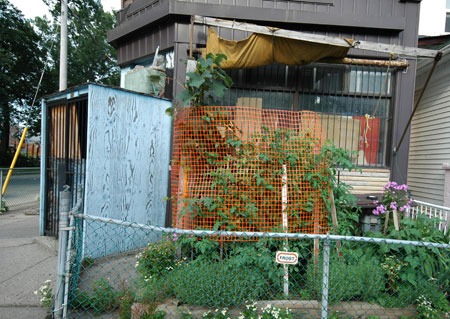
I think this method is called, “Using Whatever’s Available.” It seems to work. I think it’s kind of interesting and matches the hodge-podge style of the space although I don’t think it would score points for curbside appeal with The Better Homes and Gardens crowd. It’s the kind of look I will miss dearly once the whole neighborhood becomes gentrified and scrubbed clean.
On a practical level I suspect that having the plants pushed so closely together like that will cause air circulation problems and possible disease at some point down the line. We’ve had a lot of rain this season causing tomato plants to grow very lush and bushy. Every local gardener I know has started pulling out leaves and branches to improve air flow.
Oddly enough this is not the first time I have seen this plastic orange mesh employed as a tomato staking method.
Here’s the full garden in case you’re interested. They have more edibles growing in the side yard.

I love that woodgrain coming through the blue plywood, and the blue and orange together is a wonderful color combination.
gentrification shmentrification.
It may not win lawn of the year awards, but it’s much more interesting to look at than some bland formal thing.
Maybe the owners of this garden read your blog and got the idea from your previous post? ;-)
What’s sad is that some people probably look at their home and think “someone should really try weeding!” I almost died when someone thought my chives were grass and the baby oregano plant was a weed stifling it. My apt. neighbor almost pulled it up!
Think it could catch on out in Boulder? (heh-heh-heh-heh)
“Found” materials are the best.
I’ve also employed the black netting intended to keep birds away. It’s a little bit finer, and therefore not as strong, but practically invisible from 20 feet away.